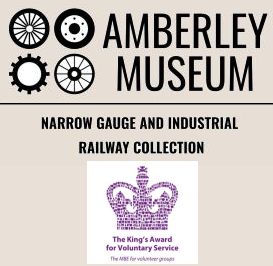

|
July 2017 After a long and drawn out process, Scaldwell, our only 3 foot gauge loco, has been transferred to the Southwold Railway Trust.
The condition into which Scaldwell had deteriorated over the years, having been stored in the open for so many years, has weighed heavily on the corporate conscience of the Museum and in particular, the Railway Volunteers for a long time. It was realised that we would not have the resources to do anything to save Scaldwell even in the medium to long term. About two years ago, it was decided that we should try and place Scaldwell with new owners who would have the resources to restore the loco to working order. Museum railway volunteer James Smith agreed (he actually volunteered) to undertake this daunting task and his efforts met with considerable success. At the end of 2016 ownership of the loco was transferred to the Southwold Railway Trust.
It is not the time nor place to go into the history of the Southwold Railway here; suffice to say that it was a 3 foot gauge light railway which ran between Halesworth and Southwold, in Suffolk. It closed in 1929 although much of the old trackbed is still evident. Here is what Wikipedia has about the original railway.
Efforts to find a contractor who had the knowledge and equipment to move Scaldwell to Suffolk were, however, frustrated initially as the contractor chosen by the Southwold Railway Trust decided that he did not want to do the job, or, having inspected the site, decided he was unable to complete it. As a result of this, the project stalled. Eventually, Duncan Milner, who does a lot of work moving locomotives (mainly narrrow gauge ones) between different locations, agreed to take on the task. A date was fixed but owing to illness, he was unable to keep to this. But finally, on Monday 10 July, the day after our successful Railway Gala Weekend, several items of heavy plant arrived on site.
Scaldwell, now showing signs of neglect, in January this year. By then, it was already in the ownership of the Southwold group, documentation having been signed in November but, as related above, the move did not take place until July. The deal included a set of unused, as new, driving wheels and axles.
Duncan Milner subcontracted the lifting to the experts and on Monday 10 July, besides Milner's low-loader, Southern Recovery Service arrived with two very heavy duty recovery rigs.
Scaldwell was soon lifted off the panel of track on which it had stood for 30-odd years.
The track was dragged out of the way and the low-loader reversed underneath in its place.
Once that had been done, the tractor unit was reattached and the loco and wheels chained down ready for the journey to Suffolk.
To seal the deal, Ruth Tyrrell, the Museum's Communications Manager, presented the brass nameplates to James Hewett, the SRT Chairman. In the photo we also see Stuart Hart (left) also from SRT, Leanne Clements, the Museum's locum Director, and James Smith who successfully negotiated the project.
Stuart Hart and James Hewett symbolically hold the nameplate on Scaldwell's footplate; the start of a new era for this important industrial locomotive.
To follow progress on Scaldwell's restoration, go to the Southwold Railway Trust's website.
There are also two Facebook pages which might be of interest:
|
